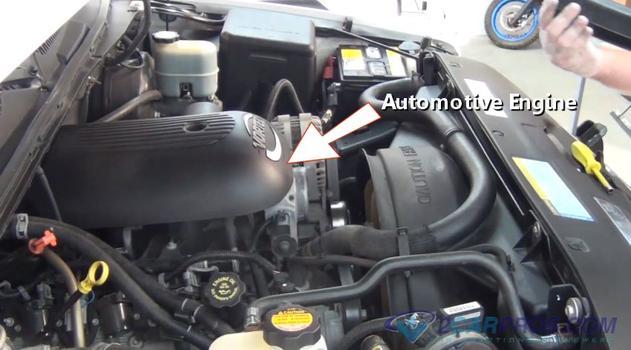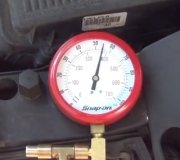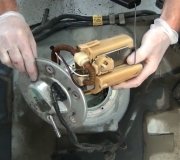Hi,
The idea that you have a long crank time is most likely the result of pressure as you first mentioned. Piston rings (low compression) would cause lower power and it would not change the fuel pressure. The idea that you smell fuel is a concern as well. Do you ever notice black smoke from the exhaust when you first start it?
Listen, if you haven't already, I need you to check fuel pressure and fuel pressure drop off. Here is a link explaining how that is done in general:
https://www.2carpros.com/articles/how-to-check-fuel-system-pressure-and-regulator
Here are directions specific to your vehicle. The attached pics correlate with these directions.
___________________________________
2007 Toyota Corolla L4-1.8L (1ZZ-FE)
Component Tests and General Diagnostics
Vehicle Powertrain Management Fuel Delivery and Air Induction Fuel Pump Fuel Pressure Testing and Inspection Component Tests and General Diagnostics
COMPONENT TESTS AND GENERAL DIAGNOSTICS
ON-VEHICLE INSPECTION
1. CHECK FUEL PUMP OPERATION
pic 1
a. Connect the intelligent tester to the DLC3.
b. Turn the ignition switch to the ON position.
NOTE: Do not start the engine.
c. Turn the intelligent tester on.
d. Select the following menu items: DIAGNOSIS / ENHANCED OBD II / ACTIVE TEST / FUEL PUMP/ SPD.
e. Check the fuel operation while operating it with the intelligent tester.
If the fuel pump does not operate, replace the fuel pump.
pic 2
f. If you have no intelligent tester, connect the positive (+) lead from the battery to terminal 5 of the connector, and the negative (-) lead to terminal 4.
NOTE:
- These tests must be done quickly (for less than 10 seconds) to prevent the coil from burning out.
- Keep the fuel pump as far away from the battery as possible.
- Always do the switching at the battery side.
g. Check that there is pressure remaining in the fuel inlet pipe from the fuel line.
HINT: If there is fuel pressure, you will hear the sound of fuel flow. If there is no fuel pressure, check these parts: Fusible link, Fuses, Main relay Fuel pump, ECM and Wire harness.
h. Turn the intelligent tester off.
i. Turn the ignition switch to the LOCK position.
j. Disconnect the intelligent tester from the DLC3.
2. CHECK FUEL PRESSURE
a. Using a voltmeter, measure the battery voltage.
Standard voltage: 11 to 14V
b. Discharge fuel system pressure.
c. Disconnect the cable from the negative (-) battery terminal.
pic 3
d. Remove the fuel pipe clamp No. 1.
e. Pinch the retainer of the fuel tube connector, then pull the fuel tube connector out of the pipe to disconnect the fuel tube.
NOTE:
- Check that there is no dirt or other foreign objects around the connector before disconnecting it. Clean the connector if necessary.
- It is necessary to prevent mud or dirt from entering the connector. If mud or dirt gets in the connector, the O-rings may not seal properly.
- Only disconnect the quick connector by hand.
- Do not bend, kink or twist the nylon tubes.
- Protect the connector by covering it with a plastic bag.
- If the pipe and connector are stuck, carefully try wiggling or pushing and pulling on the connector to release it. Pull the connector off the pipe carefully.
pic 4
f. Install SST and the fuel tube connector into the vehicle.
SST 09268-31011 (09268-41500, 90467-13001, 95336-08070), 09268-45014 (09268-41200, 09268-41220, 09268-41250)
g. Wipe off any split gasoline.
h. Connect the cable to the negative (-) battery terminal.
Torque: 5.4 N.m (55 kgf.cm, 48 in.lbf)
pic 5
i. Connect the intelligent tester to the DLC3.
j. Turn the ignition switch to the ON position.
k. Turn the intelligent tester on.
l. Select the following menu items: DIAGNOSIS / ENHANCED OBD II / ACTIVE TEST / FUEL PUMP/ SPD.
pic 6
m. If you have no intelligent tester, connect the positive (+) lead from the battery to terminal 5 of the connector, and the negative (-) lead to terminal 4.
n. Measure the fuel pressure.
Standard: 304 to 343 kPa (3.1 to 3.5 kgf/sq.cm, 44 to 50 psi)
- If the fuel pressure is greater than the standard value, replace the fuel pump.
- If the fuel pressure is less than the standard value, check the connection of the fuel hose and fuel pump.
o. Disconnect the intelligent tester from the DLC3.
p. Start the engine.
q. Measure the fuel pressure when the engine idles.
Standard: 304 to 343 kPa (3.1 to 3.5 kgf/sq.cm, 44 to 50 psi)
r. Stop the engine.
s. After stopping the engine, check that the fuel pressure does not change for 5 minutes.
Standard: 147 kPa (1.5 kgf/sq.cm, 21 psi) or more
If the fuel pressure is not as specified, check the fuel pump or fuel injector.
pic 7
t. Connect the fuel tube.
1. Align the fuel tube connector with the pipe, then push the fuel tube connector in until the retainer makes a "click" sound to connect the fuel tube to the pipe.
NOTE:
- Check that there are no scratches or foreign objects around the connected part of the fuel tube connector and pipe before performing this work.
- After connecting the fuel tube, check that the fuel tube is securely connected by pulling the fuel tube connector.
u. Install the fuel pipe clamp No. 1.
v. Check for fuel leaks.
_________________________
If this is something you already have done, let me know. We will move on at that point.
Joe
Images (Click to make bigger)
Thursday, October 15th, 2020 AT 12:04 PM
(Merged)























